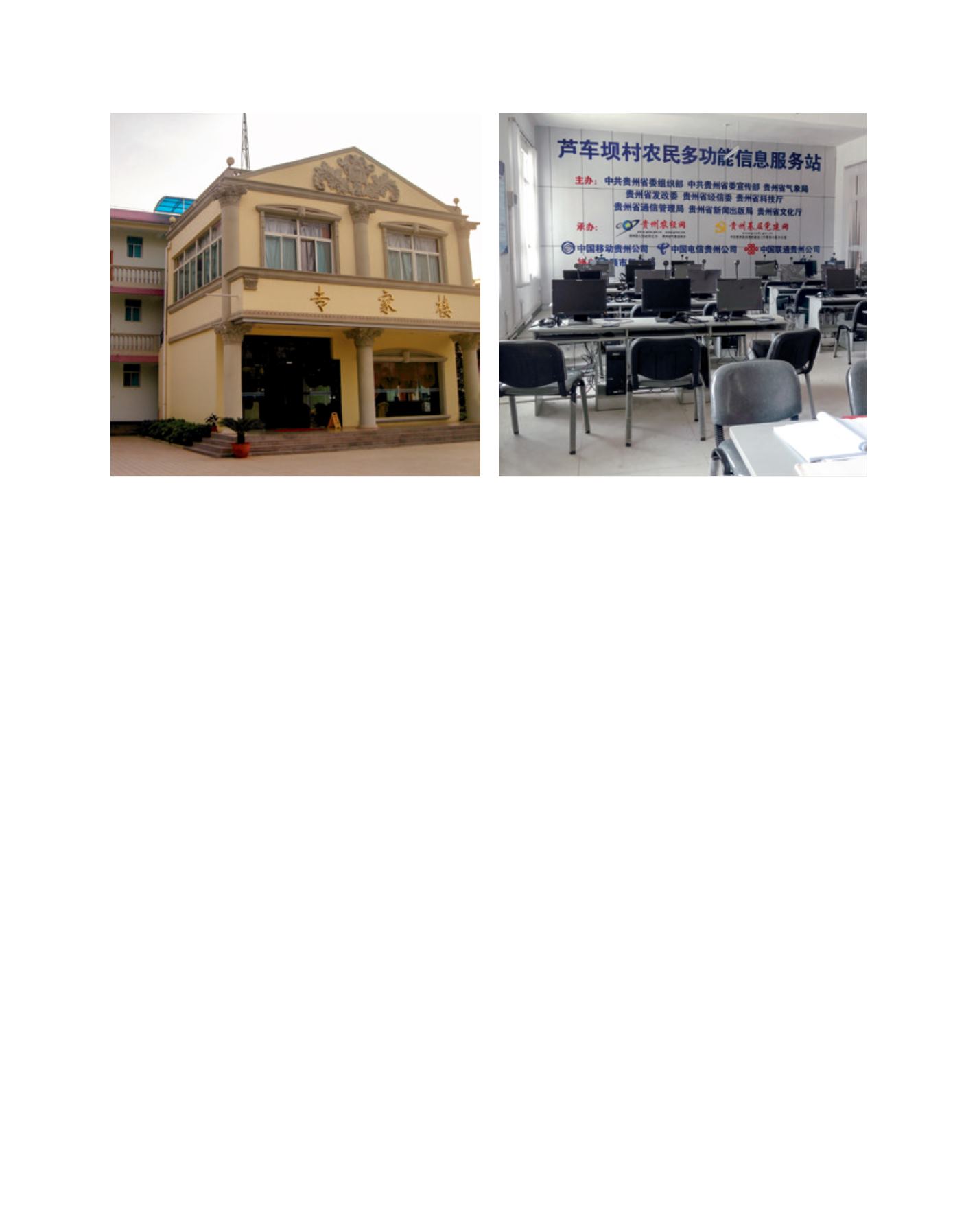

[
] 127
water quality (pesticide residues free), increased year-
round water availability, reduced run-off (30-40 per cent),
reduced soil loss (from 10 t ha
-1
to 2 t ha
-1
), increased
greenery cover and associated increased carbon sequestra-
tion through tree cover.
Lucheba watershed, China
Lucheba village in Pingba County, Guizhou province in
southern China was selected in 2003 for integrated water-
shed interventions by the International Development
Research Centre and ICRISAT team. This cluster of six
villages (11 natural villages) with 340 households and
1,373 people was growing maize, rice, soybean, sunflower
and rapeseed during the year. Women in the villages were
unhappy as they had to travel long distances to fetch drink-
ing water and houses were dilapidated. The village had no
access road connecting it to the main road and people used
to migrate to cities to work as construction labourers.
In 2003, based on discussions with the village commu-
nities, two drinking water schemes were undertaken as an
EPA with project funds and contributions from villagers.
Springs in the hills were tapped, and water was piped to
the village. This promoted collective action and brought
farmers together. The watershed management programme
introduced various interventions focused on reduc-
ing poverty and land degradation by adopting a farmer
participatory approach. These included soil and water
management, improved cropping systems, crop diversifi-
cation, integrated nutrient and pest management practices,
along with other income-generating microenterprises
such as poultry and pig rearing. The communities were
involved throughout the programme, and were active in
identifying constraints and interventions, and modes of
implementation, monitoring and evaluation for the impact
assessment. Some 151 rainwater harvesting/irrigation water
storage tanks of 5 m
3
capacity were constructed, 133,600
trees were planted on 100 hectares of wasteland, and a 4.8
km village approach road was built from the main road.
Later a 6 km-long field road was constructed with govern-
ment support. Crop diversification was undertaken, with
high-value vegetable crops. More than 260 biogas plants
were set up in village households to reduce pressure on
fuelwood and protect the forests. The whole village now
has biogas powered street lighting. Microenterprises for
women were promoted along with forage production on
bunds. Training courses were conducted for farmers and
later, with government support, a computer-aided training
centre with internet facilities was established. The Lucheba
watershed area is now covered with lush green vegetation.
The old and dilapidated houses have been transformed
into new concrete houses with big courtyards and gates,
equipped with modern appliances.
“We started using harvested rainwater for cultivation,
and everything just changed,” said Peng Fay Ou, a farmer
with a 1 hectare landholding in the Lucheba watershed.
With seven members in the family, he used to earn ¥3,000
(US$500) per year. Now his agricultural income has
increased threefold, to ¥10,000 (US$1,650) per year. With
water now available, three crops of vegetables are grown
in the village. The Vegetable Growers’ Association plans
the growing cycle and markets the crops using the internet
facilities. The benchmark crops (rice, corn, rape, soybean,
sunflower and kidney bean) were replaced with high-
value crops like cabbage, watermelon and vegetables like
tomato, pumpkin, chillies and eggplant using hybrid seeds
and improved agronomical practices. The average area
under cultivation of rice, maize and peas has decreased
by 18 and 38 per cent respectively, while the area under
cultivation of high-value crops has increased by two to six
times. Yields for different vegetables have increased by
A concrete house and internet training facility at Lucheba watershed, China
Images: ICRISAT
D
eep
R
oots
















